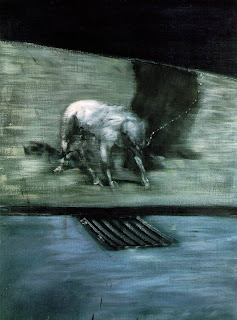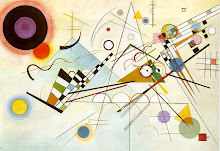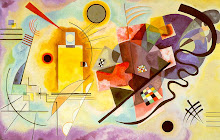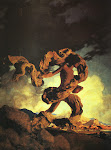Study After Velázquez's Portrait of Pope Innocent X
1953
Bacon is very hard to describe as an artist and a man. It can easily be said that he was extremely obsessive and you can tell this from his pieces, which often went through nearly endless editions (the painting above is the most famous piece of a group of over forty versions of Velázquez's famous painting of Pope Innocent X). His artworks macabre sense derives from the New Objectivity movement, but even surpasses the grotesqueness that the Weimar Republic's painters could ever achieve. And what is most glaring about Bacon's works is not the presence of death as a symbol, but the nearly constant visualization of suffering; thoughts on that suffering haunted me as a child when I first saw his works, and somehow remain more potent and material than any imagery or symbolism of death in other pieces.
Self-Portrait
1972
Study for Human Body
1991
Man with Dog
1953
Head IV
1949
Painting
1946













I truly love Francis Bacon, but I would have a hard time articulating exactly why I feel that way. For whatever reason, I am always moved when I see his work.
ReplyDeleteIt is very difficult, isn't it Sally? For me, it's a bit like trying to explain why I'm fascinated by the monsters of my nightmares.
ReplyDeleteWow, yeah, I'd say that something like 'Head IV' is nightmarish.. but nightmarish in a good way...though that seems contradictory..
ReplyDeleter-h s, thanks for the comment. Nightmares might not be pleasant, but they can be fascinating, which is how I think of Bacon's works.
ReplyDelete